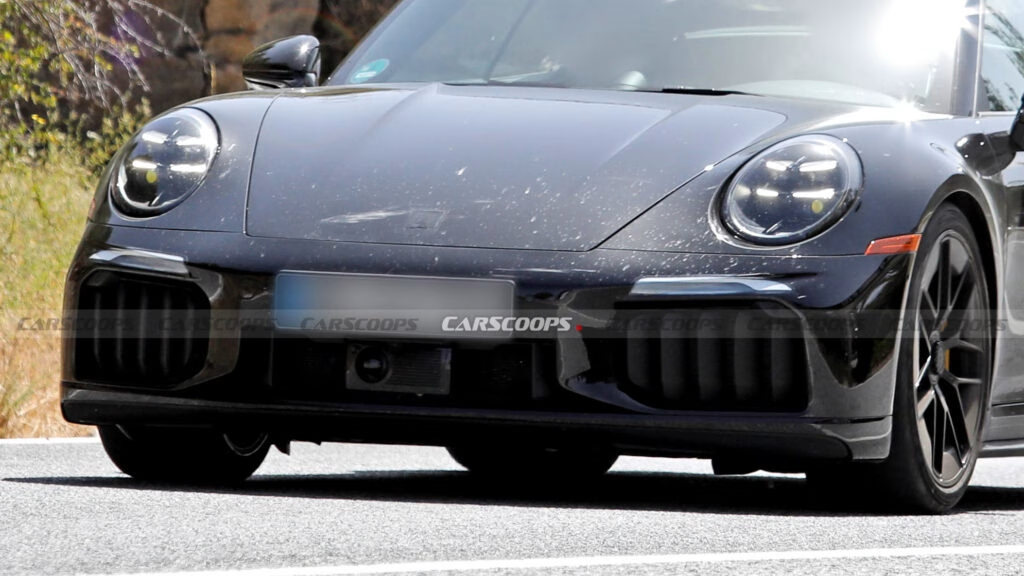What’s New with the 2026 Porsche 911 Turbo Convertible Hybrid?
If you’ve been waiting for Porsche to shake up its iconic 911 Turbo Convertible, the latest spy shots are your first clue that big changes are coming. The 2026 model has finally been spotted out in the wild, and it’s not just a facelift—it’s a full-on evolution. So, what’s actually different, and why does it matter for drivers who crave both performance and a bit of open-air drama?
How Is Porsche Blending Hybrid Tech with Classic Turbo Power?
Let’s get right to the heart of it: the new 911 Turbo Convertible is going hybrid. But don’t expect a plug-in or a silent EV mode like you’d find in some competitors. Instead, Porsche is taking a page from its own GTS playbook, integrating a hybrid system that’s all about boosting performance rather than maximizing electric-only range.
The current Turbo and Turbo S run on a 3.7-liter twin-turbo flat-six, cranking out 572 and 641 horsepower, respectively. The new hybrid setup, however, is likely to use a version of the 3.0-liter engine from the GTS, paired with an electric motor tucked inside the dual-clutch transmission. In the GTS, this combo delivers 532 horsepower, but for the Turbo, insiders are whispering about figures closer to 700 horsepower for the S model. That’s a serious leap—enough to keep Porsche at the front of the supercar pack.
Why Go Hybrid If There’s No Plug-In or EV Mode?
You might wonder: what’s the point of a hybrid if you can’t drive on electric power alone? Porsche’s answer is simple—instant torque and sharper response. The electric motor fills in the gaps where turbo lag used to live, making acceleration even more immediate. This isn’t about sipping fuel on the school run; it’s about wringing every last drop of performance from a legendary platform.
And unlike the Corvette E-Ray, which can glide around for a few miles on battery power, the 911 Turbo’s hybrid system is always working in tandem with the gas engine. It’s a purist’s approach to electrification—one that keeps the driving experience front and center.
What Subtle Design Tweaks Should Enthusiasts Look For?
Porsche doesn’t do radical redesigns for the 911, but the 2026 Turbo Convertible does pick up some fresh cues. The most noticeable? Vertically-mounted active aero flaps in the front grille. These aren’t just for show—they open and close to balance cooling and downforce, adapting on the fly depending on how hard you’re pushing the car.
Around back, expect to see an illuminated Porsche script (hidden under tape for now), and inside, a fully digital instrument cluster joins the party. There’s also a new starter button, which has become standard across most of the 911 lineup. Small touches, sure, but they add up to a more modern, tech-forward feel without losing that classic 911 vibe.
Is the Two-Seat Layout Here to Stay?
Here’s a twist: the new 911 Turbo Convertible will come standard as a two-seater. Rear seats, always more symbolic than practical in the 911, are now optional across the range. For most Turbo buyers, this won’t be a dealbreaker—if anything, it signals a sharper focus on the driving experience. But if you’re the type who likes to squeeze in extra passengers (or just appreciates the extra insurance discount), you can still tick the box for those token rear seats.
How Does the 2026 Turbo Convertible Stack Up Against Rivals?
In a world where hybrid supercars are becoming the norm, Porsche’s approach stands out for its restraint. There’s no heavy battery pack weighing things down, no complicated plug-in routines—just a clever use of electric power to make an already blistering car even quicker. It’s a move that echoes what we’ve seen from Ferrari and McLaren, who both use hybrid tech to sharpen, not soften, their flagship models.
According to recent industry data, hybrid sports cars are seeing a surge in demand, especially among buyers who want both performance and a nod to future-proofing. Porsche’s decision to keep the Turbo’s hybrid system non-plug-in is a calculated one, aimed squarely at enthusiasts who care more about lap times than electric range.
What’s the Timeline for the New 911 Turbo Convertible?
If the rumor mill is right, both the coupe and convertible versions of the new Turbo could debut as soon as this fall, possibly at the Los Angeles Auto Show in November. That means you won’t have to wait long to see the production version in all its glory—and, if history is any guide, deliveries could start not long after.
The Big Takeaway for Porsche Fans
The 2026 Porsche 911 Turbo Convertible isn’t about reinventing the wheel—it’s about making smart, focused adjustments that keep the legend alive for a new era. Hybrid power, active aero, and a tech-savvy cabin all add up to a car that’s faster, sharper, and more engaging than ever. Start with one change this week—maybe it’s learning more about hybrid tech or just taking your current car for a spirited drive—and you’ll likely spot the difference by month’s end. The result? Pure magic.

